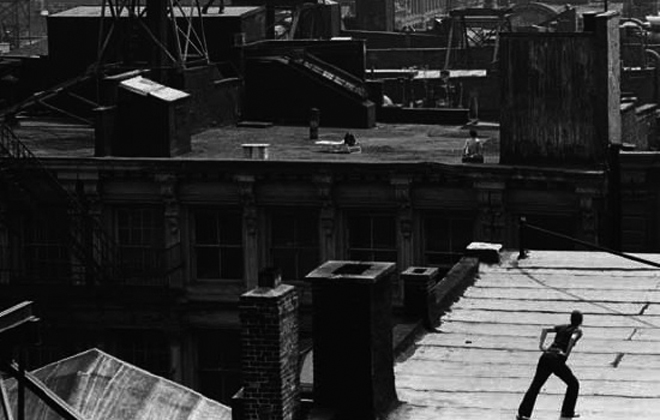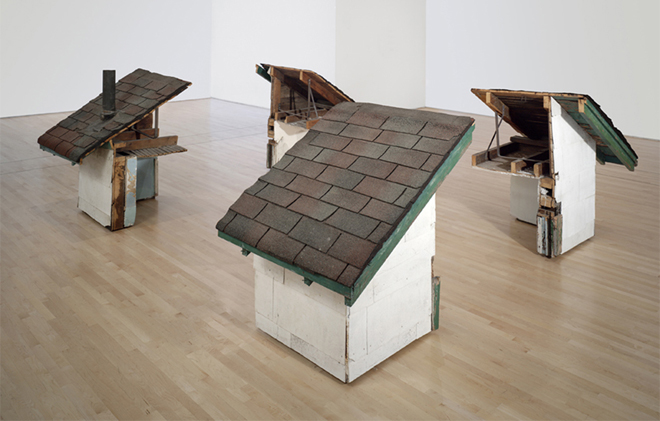The Barbican’s latest exhibition Pioneers of the Downtown Scene, New York 1970’s brings together the work of three of SoHo’s artistic anarchists – Laurie Anderson, Trisha Brown and Gordon Matta-Clark.
The trio were collaborative vigilantes amidst escalating economic turmoil, with Manhattan’s industrial wasteland providing the creative playground for their territorial endeavors.
Laurie Anderson seems the most trusting of New York’s badlands, cataloging dreams induced by sleeping in various locations across the city in the Institutional Dream series, including a nap on the beach at Coney Island. In another room you come across her attempts to reverse the street’s code of conduct with a photo series recording the men of SoHo who made seedy comments to her in the street. Two young guys leaning out of a Chevrolet who moments before had cat-called Let’s go for a ride cutie are snapped along with a man near a fire hydrant who had muttered, “I’d like to screw you baby.”
If Anderson’s concern is the social or intangible effects of New York’s wild downtown district, Matta-Clark’s reaction is much more invasive. Blurring boundaries of sculpture and architecture, MC went as far as dissecting chunks of the city’s rooftops in a bid to catalogue his ‘anarchitectural’ view of unusable properties in Staten Island and Queens.
The interactive and exhibitionist kinship between the three artists is maybe best illustrated by the work of the second female artist, performer Trisha Brown, who teetered on the surface of this disturbed cityscape; taking her medium of dance off the stage and onto the rooftops.
This is a rare and revealing survey of New York’s recent history in the shady era before high rents and fashionable quarters. And it’s bound to inspire some very modern admiration for their original brand of daredevil urban creativity.

Pioneers of the Downtown Scene, New York 1970s is at the Barbican Art Gallery, until 22 May 2011.
Words by Julia Hobbs


 PREVIOUS
PREVIOUS

 Twitter
Twitter
 Tumblr
Tumblr
 YouTube
YouTube
 Facebook
Facebook
 Instagram
Instagram
